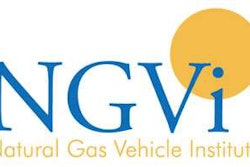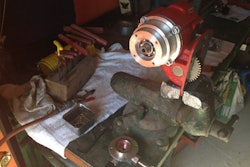As part of its Bendix Tech Tips series, Bendix Commercial Vehicle Systems LLC and Bendix Spicer Foundation Brake LLC (BSFB) have produced the following maintenance insight on safety packages that include advanced safety systems and air disc brakes.
First Things First
“Our technical support teams find that component replacement is often the first response to an electronics problem within an antilock braking system, or within traction, stability, or collision mitigation technology,” says Fred Andersky, Bendix Commercial Vehicle Systems director of customer solutions, Controls. “Many times, though, the issue isn’t the component itself, but a problem that’s more difficult to detect, but easier – and cheaper – to fix.”
Some simple troubleshooting, then, can mean the difference between a costly repair with extended downtime and a quicker, lower-cost solution.
First responses to an electronic component issue should include examining the wiring and input sensors, checking for:
- Frayed wires
- Corroded connectors
- Blown fuses
- Out-of-position wheel speed sensors
- Misaligned radar unit
Other possible causes of issues that don’t require component replacement include a radar sensor blocked by snow, ice, or debris; a damaged sensor bracket; or problems with the vehicle’s J1939 communications and diagnostics network. Obvious damage, such as a smashed radar unit, would require replacement of the component, since there are no recommended maintenance practices for repairing the sensitive electronics inside, Bendix says.
Physical components of stability and collision mitigation systems generally require maintenance only if changes have been made to certain parts of a vehicle. For example, Bendix says if you make repairs such as front-end alignments or steering linkage service, you’ll need to recalibrate the steering angle sensor of the stability system according to the manufacturer’s guidelines. Similarly, any work on the frame rail that involves removing or loosening the yaw-rate/lateral acceleration sensor of the ESC system will mean the sensor needs to be recalibrated after it has been returned to its proper position and secured. And changes in tire size necessitate the use of diagnostic support software to update the new tire values, the company says.
The Next Level of Diagnostics
Bendix says if there doesn’t seem to be a visible reason for the problem, it’s time to use your system’s supporting hardware and software. Pursuing an accurate diagnosis will help save time and money in the long run.
Make sure the proper equipment is in use, and ensure that software is up-to-date. Refer to manufacturers’ Service Data Sheets for reference guides and instructions on reading information like diagnostic unit blink codes. Hardware such as Bendix Remote Diagnostic Units for both tractors and trailers can be used to troubleshoot brake and safety systems, and is available from many aftermarket dealers, and Bendix ACom Diagnostic Software is one example of a free downloadable software tool, the company says.
Generally, Bendix adds that stability or collision mitigation system troubleshooting involves two processes: a system self-test, and driver input.
Active safety systems like Bendix Wingman Fusion include a built-in Power-Up Self Test. On Fusion, this test is run by powering down the vehicle, turning the key to the “ignition power” position, toggling the cruise control and leaving it in the “on” position, and then starting the vehicle. If the system discovers an issue that will prevent proper functioning, it will generate an audio alert and a Diagnostic Trouble Code, depending on the manufacturer, the company says.
Note that while this code may point to a specific component, it may indicate that the component is not getting power due to a faulty connection or damaged wire, so those possibilities should be investigated before the component is replaced.
Bendix says driver insight is also valuable and crucial when active safety systems and electronics seem to be malfunctioning. Have the vehicle’s driver describe any system behavior that they believe points toward the technology not working properly, and review the manufacturer’s list of detailed scenarios and tests. These often include specific questions about the performance of the vehicle’s cruise control, dashboard display icons, distance alerts, and system interventions.
Air Disc Brake Matters
“Due to their stopping power and reliability, air disc brakes are often used to complement and maximize the performance of advanced safety systems,” says Keith McComsey, director of marketing and customer solutions, Bendix Spicer Foundation Brake. “And while air disc brakes do offer uptime advantages over drum brakes, they still require regular maintenance in between friction changes.”
Regular preventive maintenance of air disc brakes should include ensuring proper running clearances between the rotor and pads, and checking that the caliper slides freely. Bendix says other inspection points important to air disc brake upkeep are:
- Checking the mounting hardware of calipers and air chambers
- Monitoring pad wear: Minimum allowable friction material thickness is 2mm
- Measuring rotor thickness and looking for cracks that exceed allowable limits
- Looking for damage or corrosion on tappets and boots
Information in the Bendix Tech Tips series, along with instructional videos and interactive training on foundation drum brakes and friction, can be found at the Bendix On-Line Brake School, www.brake-school.com.










